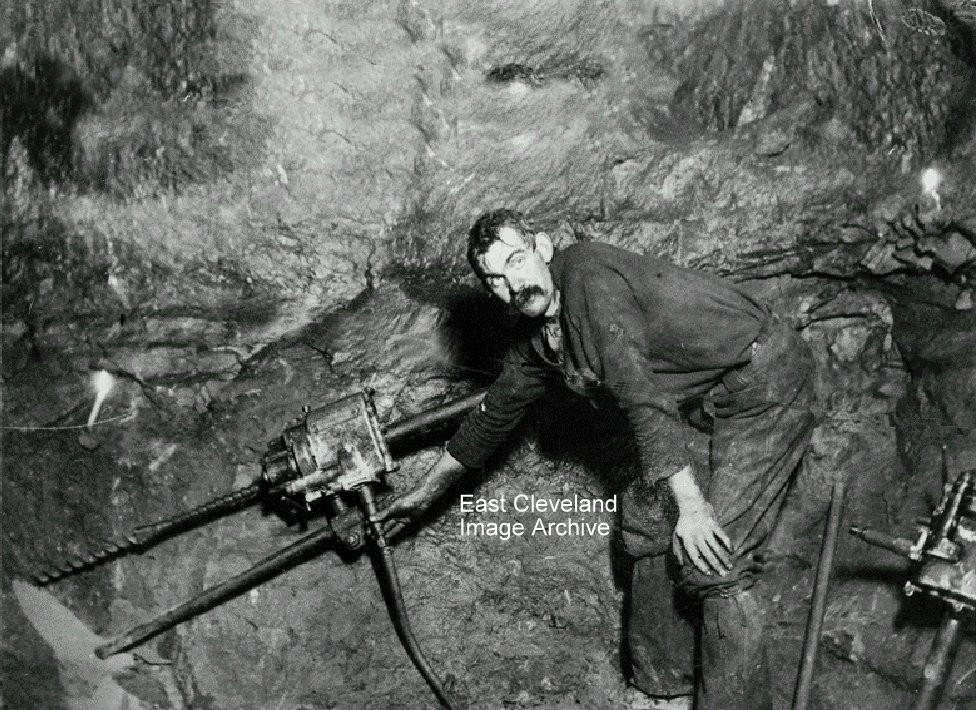
All through the life of the mines there was a constant battle to increase yield without increasing manpower. Ironstone was won by blasting a portion of the rock face out and then loading the stone into a tub (or sett) to be taken back to the heapstead. To place the shot the miner had to create a hole into which he could place his powder, detonator and fuse. This was the time-consuming part of the job initially carried out by hand; then by hand ratchet drill; then by either compressed air, petrol or electric drill. This obviously posed photograph is a record of the testing of just one such drill. This picture and the other one entitled similarly are two out of a group of four pictures taken about 1900 when Whitecliffe Mine was re-opened and this compressed-air drill was tried out underground. From the earliest times the hand ‘jumper’ drill was used, in 1875 the first compressed-air powered rotary drill was invented. Loftus Mines introduced such drills in 1891 but they were big and cumbersome so this one illustrated was tested but never adopted.
Later electric drills were used in Loftus but about 1895 hand-operated rotary drills were introduced (the so-called ‘ratchet’) and eventually superseded the powered drills. Loftus Mines, however, were never as mechanised as the Dorman Long mines in Cleveland. (words by Simon Chapman).
Recent Comments